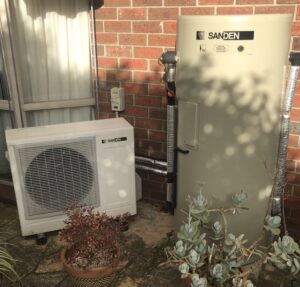How to Incorporate Green Elements in Your New Build Kitchen
Guest Post by Richard Kayode
You are building or refitting your kitchen and you are thinking about a few eco-friendly ways to move forwards.
In many cases, your options are limited unless you are willing to pay far more than you would otherwise.
We still live in an age where eco-friendly means more expensive.
It is why caged chicken eggs still exist because they cost ten cents less than free-range eggs.
Here are a few eco-friendly ideas for your kitchen.
Start With Sustainable Cleaning Products
Getting started with the simple stuff, there are now enough options on the market for most people to use eco-friendly cleaning products.
Using biodegradable and plastic-free products may seem like a drop in the ocean when you consider how much cleaning product reaches our rivers and seas, but every little helps. Plus, the more that people use bio-friendly products, the cheaper they become.
Opt for Durability Over Environmental Friendliness
The taps made from recycled cans and the sink from recycled tyres may seem like the environmentally sound thing to do, but durable appliances, fixtures and fittings are far more environmentally friendly.
The carbon cost of manufacturing, shipping, fitting, and then disposal are all far more damaging than the slight reduction in carbon that comes from recycled items.
Not to mention how damaging the cheaper items from China are when you consider how much carbon is output to create devices that last fewer than five years.
Recycled Material Insulation
One place where recycled materials really shine is as insulation.
The walls, the ceiling, and any areas where you want to keep heat contained will all benefit from recycled material insulation.
The mixture of recyclable materials used these days is carefully crafted to help it keep in the heat and help to maintain the material’s fire retardant nature.
There are some amazing developments in recycled ceramic-based inorganic insulation that make them better fire barriers than spray foam.
What’s more, even though it is marginally more costly than using other materials, it does have a positive long-term effect on the environment when people choose it over cheaper new materials.
Your Tumble Dryer
There are modern heat-pump dryers that are an innovation in our modern times.
They recycled the hot air inside the machine, running it past a dehumidifier.
By capturing and recapturing the hot air in the system, it takes a little longer to dry your clothes. but you do not need an outside vent, which means you can put it anywhere, and it doesn’t really heat up the room.
The device itself hardly heats up. Internal heat is managed so well that even the longer spin cycles only use a tiny fraction of the energy other spin dryers use.
Also, the slow and warming way that the device works will leave your clothes and bedsheets softer and fluffier.
A Green Hot Water Service
 Of all your eco-friendly options, this is probably one of the most readily available.
Of all your eco-friendly options, this is probably one of the most readily available.
There has been a real push for energy-saving boilers over the last few years, and there is quite a range to choose from.
As you have probably seen, there are those that use solar heat and those that only turn on when the taps are turned on.
There are those that are super-insulated, and those that push water through massive curls of pipes in attempts to get as much surface area showing as possible.
Save Water in Your Kitchen
There are attachments you can add to taps to make them spread the water in a way that makes it more effective when used; they are often called water aerators.
There are water-saving dishwashers and water-saving washing machines.
Again, the sad side of the story is that you often have to spend a fair amount of money on water-efficient devices.
But, if your water bill is metered rather than a flat rate, then these efficient devices can make up for some of their cost in savings on your water bill.
There are quite a few ways to save money on your washing if you make just the slightest changes in your routines.
Some Eco-unfriendliness is Unavoidable
Whether you are having your new kitchen built or simply refitted, some degree of eco-damage is inevitable and unavoidable.
Try to examine each process and see if you can make them more efficient.
For example, you may have many of your building materials delivered from one supplier in one delivery.
Some of their items may be more expensive than if you shopped around but having them delivered in one shipment is more ecologically friendly.
Keep these things in mind as you are planning and building your new kitchen.